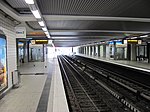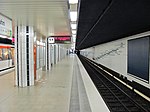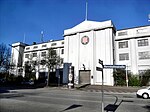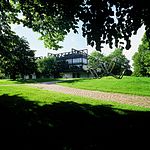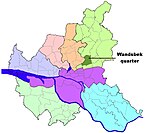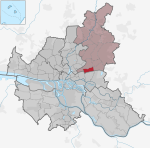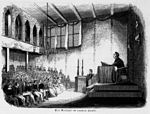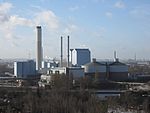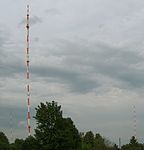Legienstraße station
1967 establishments in West GermanyBuildings and structures in Hamburg-MitteGerman rapid transit stubsHamburg U-Bahn stations in HamburgHamburg railway station stubs ... and 2 more
Hamburg stubsRailway stations in Germany opened in 1967

Legienstraße is a metro station on the Hamburg U-Bahn lines U2 and U4. The station was opened in September 1967 and is located in the Hamburg district of Horn, Germany. Horn is part of the borough of Hamburg-Mitte. Legienstraße is peculiar among Hamburg U-Bahn stations, as its two side platforms are rather wide apart, separated by a green median strip.
Excerpt from the Wikipedia article Legienstraße station (License: CC BY-SA 3.0, Authors, Images).Legienstraße station
Riedweg, Hamburg Horn
Geographical coordinates (GPS) Address Nearby Places Show on map
Geographical coordinates (GPS)
| Latitude | Longitude |
|---|---|
| N 53.546944444444 ° | E 10.096388888889 ° |
Address
Riedweg 1
22111 Hamburg, Horn
Germany
Open on Google Maps

